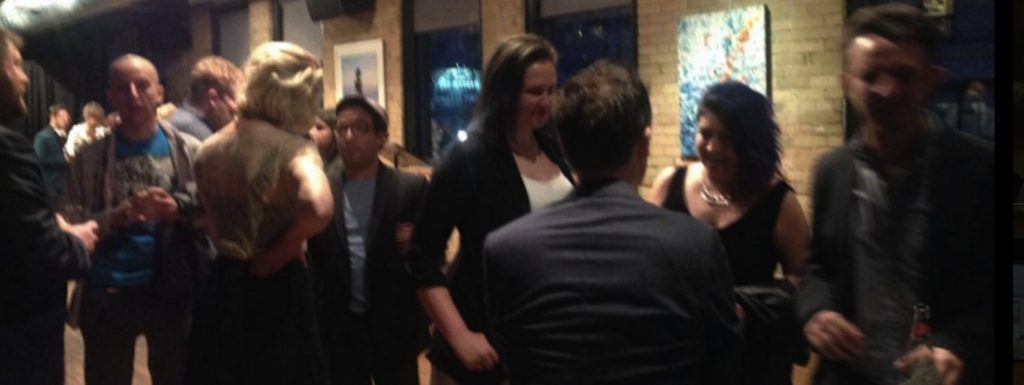
I think it’s important to begin this article by acknowledging my own hypocrisy.
In writing this piece that had its genesis in my incredulity that the Toronto Theatre Critics’ Awards (TTCAs) continue to have an all-male jury five years after being founded, I have managed (with co-editor Adrienne Wong) to pull together three articles by white guys from across Canada to form this edition. This is something that rarely happens on #cdncult, to go 3/3 like that. I think it speaks to the structural bias that exists within theatre criticism itself.
Back in November, critic Kelly Nestruck published an article in The Globe and Mail that took umbrage with Ross Petty’s approach to casting his pantos “in 2015”. Petty commented, “I cannot hire somebody of a different colour just to satisfy a portion of the audience that feels they are not being represented, I need to hire the most talented people that there are.” Nestruck’s article took him to task on this casting philosophy in what is probably the least-glowing preview article I can recall. (The last line is “Boo, Mr. Petty. Boo.”)
So I wrote to Kelly Nestruck and said, “Great article, I totally agree this sort of answer is unacceptable – but how is this different than the all-male TTCAs?” In return I received a suggestion to send a list of questions for the ‘Critics Circle’ (as they prefer to be understood – not as a jury), that could be shared with the group as the informal nature meant there was no one spokesperson.
The responses I received from Nestruck, NOW’s Glenn Sumi and Torontoist & Globe and Mail’s Martin Morrow left me confused about where to go with this line of questioning. Each agreed the composition was problematic – all cited structural issues that were challenging reform. At the risk of being reductive I can summarize the dilemma as:
The Circle is drawn from ‘professional’ theatre critics – currently defined as those holding the ‘head’ critic position at each of the outlets that still manage to cover theatre and print on paper + Torontoist. Because the media is made up mostly of guys, so is the circle. As of late, non-head critics have been able to give input (for example Carly Maga at The Toronto Star), but even if membership were to be officially expanded to this cohort, would secondary critics have seen enough shows to be qualified to determine what was best each year?
All of this indicates to me that the TTCAs are in a tight spot. Despite the genuine hope for change to come from membership, change SEEMS to be controlled by the hiring practices of a media industry struggling just as much as theatre to achieve gender equity. But to do nothing is to continue our annual ritual of tweets and blog posts challenging the merit of a series of awards determined exclusively through the male gaze. They are probably one winner who ‘can’t even’ away from having an award turned down.
It seems to me the hope is The Star will hire a woman to replace head critic Richard Ouzounian to increase the critical perspective. Sure, maybe – but I hope even if that happens they use this moment as an opportunity to broaden, or perhaps deepen, the principals of The Circle. In Kelly Nestruck’s official response he gave three principles that to his mind underpinned the awards so far:
“To create more of a theatre awards season in the city; to increase the visibility of professional theatre criticism and theatre critics here; to have a party where critics and the theatre community could come together.”
I can get behind the first two for the most part, but I hope the individuals who compose the Critics Circle engage in an interrogation of the third and what it means.
If the intention of the Critics Circle is to “come together” with the theatre community, well, you should take note of how the community works. We’ve created systems to determine merit within the theatre community, be it an award or a grant, and in any case, an all-male decision-making body is pretty much out of the question. There is probably an actual rule about it at the arts councils and Google search “Jessie Awards” “diversity” if you don’t believe me about the other stuff.
While I recognize a critic’s circle is distinct from an arts jury, I’m not sure the semantics are relevant to what the word community means at its core. The word implies a shared sense of values and principals that define what the community is. And while it has been a while since my sociology minor, I do recall that part of defining who is part of the community is determining those who demonstrate a commitment to shared values. Those who do not are “other” and not part of the community. There is always an “other” – the community defines itself in part by what it is not.
So there is an opportunity here regardless of whom The Toronto Star’s new theatre critic is. It’s one where our critics, who will continue to play an essential role in the ecology, could also become part of the community. They can do it by demonstrating a commitment to our shared values. This can’t be done simply by welcoming a female member courtesy of someone else’s hiring decision. But this can be done by proactively addressing gender inequity within the Critic Circle’s composition. When critics and artists come together for a party this summer, will it be as “other” and community or as a community?
Our critics are constrained by the same structural bias that led us at #cdncult, without even noticing it until it was too late – to curate this all-male issue. It’s not easy. All of us get it wrong sometimes – think about how deeply difficult a time this has been for the theatre community and equity issues. It takes active resistance to reshape these practices and I don’t know the answer exactly. I do know that passive acceptance of others’ decisions is not the path forward, and efforts to effect change is what the rest of the community is up to these days.









